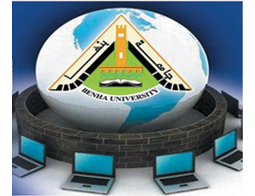Economic Evaluation Of Some Egyptian Agricultural Irrigation Systems:
|
|
Author | |||||
|
Ph.D
|
Type | |||||
|
Benha University
|
University | |||||
|
|
Faculty | |||||
|
2000
|
Publish Year | |||||
|
Agriculture is considered the main first consumer of water. Theirrigation water requirements nearly about 95% of Egypt yearly Nilewater share and about 80% of Egyptian water source . Government ofEgypt has performed many programs, and special projects for horizontaland vertical e .pansion to rise agricultural production, and producti vity and relies the economical de elopments. The essence of problem whichlimit performing this programs and projects in agriculture sector that theEgyptian waters resources is relatively rear. Above all, the exce sive useof water by farmers in old lands that represent about 85% of totalirrigation practice . Irrigation improvement project (TIP) is one of those projects that the ministry of public work & water resources in cooperates with ministry of agriculture ha e performed to improve that practices. Improvedsystems don by substitute the under ground pip line P.V.C.) or raisedconcrete mesqa (I.Sec.) for ordinary one. This study aimed to economically evaluate the improved irrigation systems in Egypt, and specially test the theoretical hypothesisthat water use efficiency under traditional surface irrigation system with rdinary mesqa deviate from economical u e. All above, achieve studygoals that: l-Detecting the main irrigation systems in Egypt, and explain features of irrigation management systems project (I.M.S.), Egypt water use &management project (E.W.V.P.), and rotation system improvementproject in Egypt, that engender the (lIP) national project.2- Perform the comparative economical analyses between improvedirrigation systems and traditional one according to mesqa type and farmlocation at it. 3-E timate some economical measures which reported about preferable of irrigation y tems. 4-1aunching the feasibility study for improveddiscounted measures to estimate their profit as person point of view.That means using the financial (not economical) evaluation technique.Also, study used some methods for evaluation procedures as,economical efficiency measures, analyses of variant method, economicalanalyses of production function and financial evaluation technique.Study depended mainly on raw data that collected fromstratified represented sample of fanners under both improved andtraditional irrigation systems and came out four parts, dealing withtheoretical and statistical issues related to research.Part one, detect the main irrigation systems in Egypt likesprinkler, DROP, and surface irrigation systems with a brief explanation oftheir concepts, and focus the main issues, strategies and scale ofirrigation improvement project which col-LIdbe summarized as:l-Improve main irrigation system by replacing water continues flow inmain canal instead of rotational sy tem.2-Improve on farm irrigation system by using the raised concrete mesqa(J.Sec.) or the under ground pipeline (p.V.C.)and all has one point liftingpump at upper point of it.3-setting up the irrigation advisory serves (LA.S.) to be one of theministry agencies.4- forming the water use association (W.U.A.) to realize farmerscooperation in operate and maintain mesqa, and also in water distributionalong users. 5- Improve peoples efficiency and skills especially ministry stuff.Review of literature in Part two e plain that some few ofprevious study related to the research was concerned about improvedirrigation systems economics .It is obviously that there is no studyperform the economical efficiency concepts, analysis of variance method,or launch financial evaluation technique. So, this study perform analyticalmethods above trying to economically evaluate improved irrigationsystems, and it could be a new entry for evaluate such project.Part three concerned about sample and its character. Sur e_ offarmers erved by El-Saidia canal, Sharkia governate reveals ubstantialdeviation of actual applied water quantity comparing with ration d limit.Value of water deviation under (P.V.C.) mesqa was bigger than under(lSec.) mesqa type .abo e all, water de iation value wa the biggestunder ordinary mesqa, and it estimated to be about half of actual appliedwater quantity in vain.Part four introduce procedure of irrigation system evaluation using four deferent methods every one in a chapter. Chapter one discus’ the efficiency concepts and focus efficiency of using irrigation water.Result of data calculation show that the raised concrete mesqa (lSec.)has a grate efficiency of water use-and high cost of lifting water unit. Thepipeline (P. V.C.) system prove its efficiency of using irrigation water,decline water unit lifting cost and raise gross and net return of water unittoo. Chapter two launched the analyses of variance between irrigationsystems, and farm location along mesqa in three sections upper, middle,and end tail. Data analyses manifest significant differences betweenimproved systems (lSec. & P.V.C.) and traditional one in averageirrigation cost, net return, and productivity of aria unit, also in water unit net return and actual applied water quantity.Chapter three introduces production functions and analyses of itsparameters. Data formed into two-function type using multi regressionand stepwise technique. One function represents unit aria productionunder different irrigation system and make a comparison using elasticityand marginality concepts. Chapter four illustrates financial evaluation using discounted measures also current prices. Finally, sensitivity analyses of improved irrigation systems to make sure of project capability if market condition had been changed to be worse. Result show that both improved systems are visible to be applied but (lSec.) could be preferable than (P.V.C.)irrigation system.Accounting all above, study could recommends that:I-Acceleration in applying irrigation improvement national project stepby step with allowing continuous water flow in the main canal.2-filling up the ordinary mesqa as an integral step for improving.3-Govemment must develop a program to get back systems installationcosts. |
Abstract | |||||
|
| .
Attachments |








